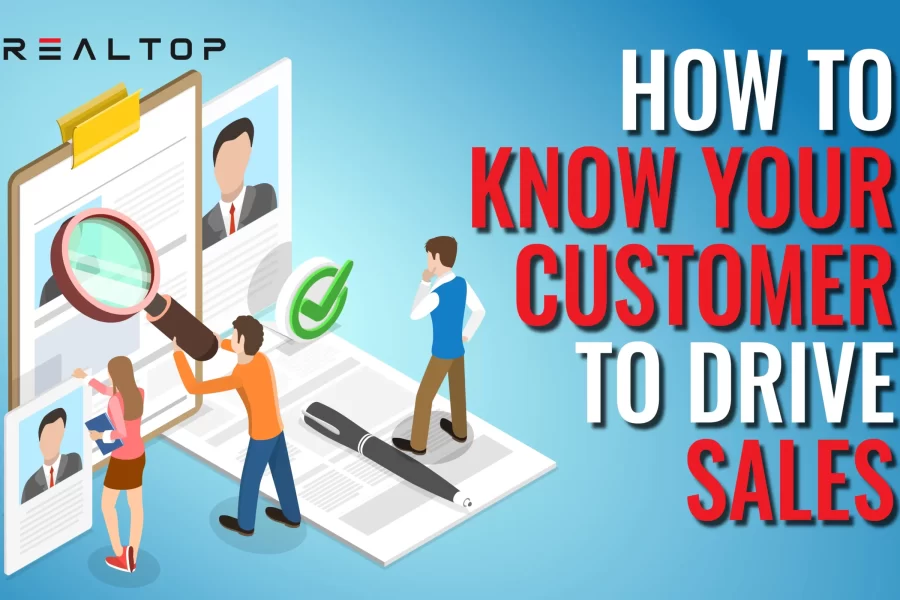
Are you sure you know your customers enough to understand their problems, needs, and interests? Or are you making assumptions based on what you believe is true?
A common mistake many businesses make is thinking that because one strategy works for a specific group of people, it will work for the rest. However, the truth is the opposite. It’s essential to deeply understand your target audience’s problems, needs, and behaviors to achieve your business goals. This way will plan and execute more effective marketing strategies that drive results.
In this blog, we’ll cover five essential aspects you should pay attention to so that you fully know your customers. This way, you’ll have accurate data about your target audience that help you formulate a results-oriented marketing strategy.
What do you mean by “knowing your customer”?
Knowing your customer means understanding characteristics that will impact their purchasing decision, for example, age, gender, income, behaviors, frustrations, and beliefs. Companies often fail to correctly identify these aspects, resulting in strategies pointing out the void. The more you know your customers, the better you will be at delivering solutions to satisfy their needs. In-depth market research should help you gather the necessary customer data. However, it is easier said than done.
What are the 5 keys to fully know customers?
Research Phase: Developing a buyer persona
Building an ideal customer profile is the first step in getting to know your customers better. A buyer persona is a representation of your target audience’s characteristics. To ensure your buyer persona is accurate, make sure to include the following aspects:
- Demographics: age, gender, income, location, etc.
- Goals: What do they want to achieve?
- Challenges: What challenges are they facing?
- Behaviors: Shopping styles, product preferences, media consumption, etc.
- Values: What matters most to them?
- Buying Process: How do they decide to purchase?
- Needs: What do they need to solve their challenges?
- Pain Points: What are the problems they are trying to solve?
- Influencers: Who influences them in their decision-making?
All this information will help you understand information about your customers, such as the channels they use the most, the content they like to consume, and the product or service they are looking for. You can then optimize your marketing strategy and provide value to them.
Mapping the customer journey
Another way you can make your research phase more fruitful is by mapping the stages you want your customers to go through to ensure they convert. Doing this will allow you to visualize your sales and marketing process much better and deliver value at each stage. Let’s look at an example:
- The client discovers your product or service through an online search, word of mouth, or other marketing channels. To achieve this, you could share engaging website or social media content optimized for search engines to raise awareness about your business.
- The client evaluates your product or service, comparing it to others. Most likely, he will visit your website to learn more. You could publish a landing page with sales-oriented content and a solid call to action to ensure you capture that lead.
- Once the client contacts you, your customer service representatives or sales team should convince the user with a stunning pitch. Create an offer he won’t be able to resist so that he knows you are the best option.
- Now, the client has decided to purchase from you. You should provide a guarantee that ensures that the client’s investment is safe in case anything happens. It will help build credibility and trust for your business while increasing your chances of obtaining referrals.
- Lastly, as a post-purchase procedure, reach the customer and follow up on his experience using your product. You can send personalized email campaigns asking for feedback. Additionally, you can create a loyalty program that rewards your most loyal customers with exclusive benefits or discounts. Promoting customer loyalty will help you create a constant flow of income for your business since they won’t want to leave.
The key is understanding what customers need and providing value once they’ve choosen your company.
Analysis Phase: Looking at the Whole Picture
Once you have gathered enough insights about your customers, it’s time to analyze that raw data.
Find Common Characteristics
Start by defining what most of your ideal customers have in common. What are the frustrations they share the most? What demographics do they share? Do all of them have similar aspirations or different?
Identify patterns in behaviors
Then, look at your behavioral data and identify trends among your target audience. What type of content do customers respond to? How often do customers purchase your products/services? What promotions do customers take advantage of? What channels do customers use when engaging with your brand?
Identify their goals: Do you REALLY know your customer?
Determining your customers’ goals will help ensure your strategies align with their needs. Analyze where they are right now and where they want to be once they acquire your product. It will also help you confirm if they are the types of clients you should focus your attention and energy or if you should focus on others. Once you have identified your ideal customer’s goals, modify your value proposition and strategy to catch their attention.
Customer Experience: Exceeding Expectations
The key to successful marketing strategies is exceeding customer expectations. You should have a great product but also excellent service. Customers will remind how your company made them feel. If you make them feel heard and appreciated, you can be sure they’ll return for more.
Also, use this opportunity to ask for their feedback regarding product satisfaction and service. It will demonstrate that you care about their opinion and provide relevant insights on what you can improve. Feedback is always acceptable, either negative or positive. Once you better understand your customers’ experience, you can optimize your sales process to ensure a high satisfaction score. This will help you know the answer to the main question: Do you REALLY know your customer?
Engagement: Understanding Customer Preferences
Ongoingly interacting with your customers will help you build strong relationships with them. Additionally, engaging with customers will get communication flowing with your company on all your digital channels. The more active and engaging your company is online, the more traffic you will generate. Pay attention to online reviews, social media comments, messages, emails, and everything that provides information about your customers preferences.
Once you understand what they like, create strategies around it. For example, if users enjoy watching videos on your social media channels, publish lots of engaging videos that catch their attention. Give customers what they want, not what you think they want.
Evolving: Do you REALLY know your customer?
Finally, from everything you’ve learned, analyze your current processes and strategies, and think, what can I do better? How can I deliver value to satisfy customer needs? Remember, it is not what you think it is but what the actual data represents. Most importantly, constantly research your target market. People change all the time. What works today might not work tomorrow.
Conclusion
Before answering “Do you REALLY know your customer?”, make sure you follow the next five key steps:
- Research and Develop a buyer persona
- Analyze and look at the whole picture
- Provide an outstanding customer experience
- Engage and understand customers’ preferences
- Think about how you can do things better
With these steps, you will be one step closer to understanding customers’ purchasing behaviors so that you can formulate effective marketing strategies that drive revenue. However, this might be the trickiest part if you have no experience with market research. But don’t worry. RealTop can help you! We have over 15 years of experience helping business owners attract more customers online through targeted digital marketing strategies. Contact us today and get a free marketing plan!

Nik Tsoukales, founder of REALTOP, is an experienced digital marketer with a track record of growing businesses and sales teams. He has received multiple awards for leading fast-growing companies and specializes in organic SEO, Google PPC, and Social Media. With over 89k clients acquired online, Nik’s expertise spans various industries including finance, healthcare, and real estate.












Hi, this is a comment.
To get started with moderating, editing, and deleting comments, please visit the Comments screen in the dashboard.
Commenter avatars come from Gravatar.